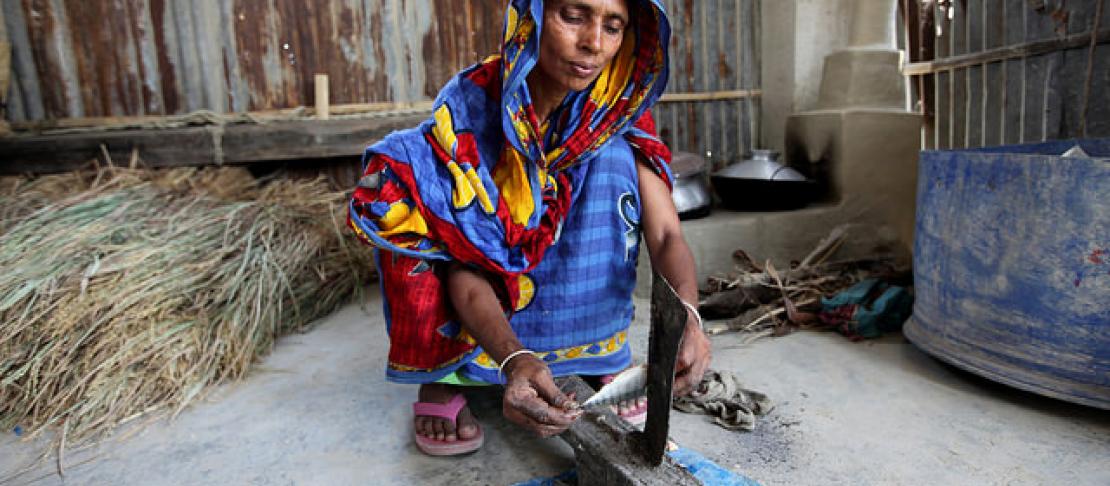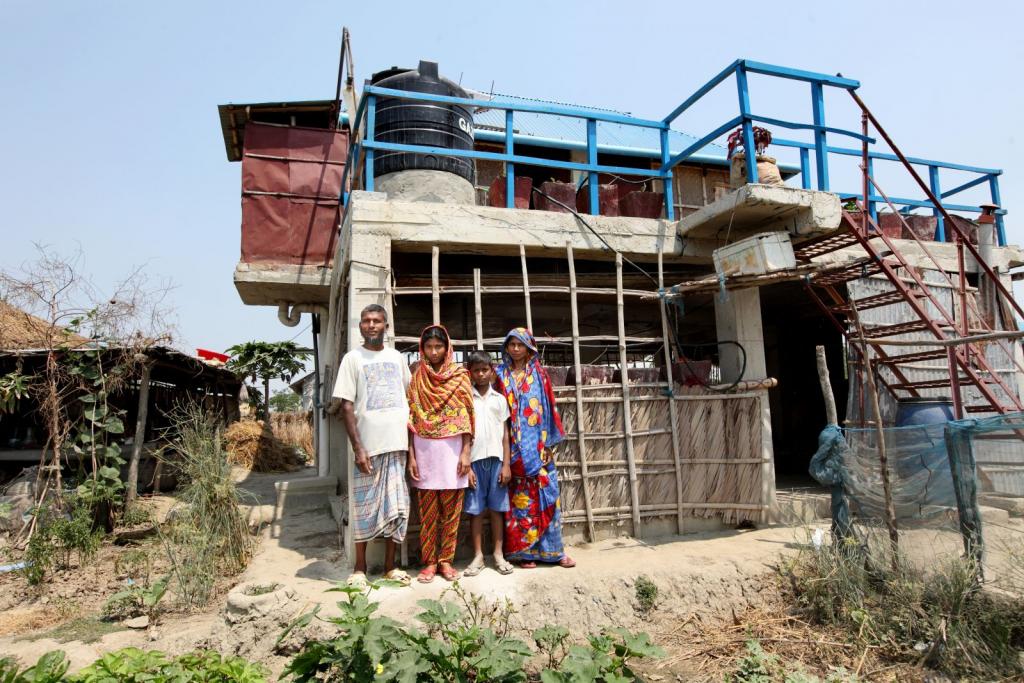Cyclone-resistant house provides food, income and shelter in Bangladesh

In just three months a family produced a total of 38kg of vegetables in their home gardens, which after feeding the family of four, earned them a net profit of BDT817 ().
Cyclones frequently hit southern Bangladesh, where more than half the population lives in poverty, and are predicted to increase in both occurrence and severity with climate change. What turns these cyclones, storm surges and floods into disasters is that families often lose not only their home but also their sources of income and food, making it harder to recover.
More than three years after cyclone Aila struck the region on 25 May 2009 affecting more than 4 million people, 50,000 were still without adequate shelter, food and drinking water.
Mehrunessa and her family were among these displaced and vulnerable people after their home and rice paddy were destroyed by floodwater.
“We all got out with the water reaching up almost to our necks. When we returned home in the morning nothing was there. It was like an empty field… Then we moved to the river banks and lived there for four years,”
says the mother of three, from Dumuria village in Satkhira.
To help families in the area adapt to the impacts of a changing climate like cyclones and increased rainfall and flooding, a team of architects, agricultural, climate change and social scientists designed a “climate-smart house” as part of the Climate Smart Farm project.

Elevated houses
By combining an elevated cyclone-resistant house with inter-connected food production systems, like aquaculture and vegetable gardens, the occupants are able to both produce food and income and protect these resources during extreme weather.
Mehrunessa’s family was selected by their community to live in the prototype house built in their village by the Climate Smart Farm project.
“It’s amazing how much we can do in this house. Aquaculture, rain water harvesting… The roof is strong enough to resist cyclones so we don’t have to evacuate,” she says.
Vegetables are grown on the top floor of the house or in elevated pots along the exterior walls of the building, putting them out of reach of floodwater, and are watered using drip irrigation.
View a video on the Climate-Smart House project in Bangladesh
“We are doing aquaculture in the fish tank for household consumption. If we face any threat of cyclones, we can cover up the fish tank properly so that we can save and consume the fish later. We can keep the vegetables safe on the top floor… We can cover up the harvested rainwater so that we can purify and it use it after a cyclone,” Mehrunessa explains.
The farming components work sustainably as a closed system, meaning that the outputs from one section, such as the rain-fed water from the aquaculture pond, are recycled as the input for another component, like water for irrigating vegetables.
Mehrunessa is as a ‘farmer researcher’ for the project, trialing and monitoring different farming techniques.
“For planting seeds in pots, I tried water from the fish tank and preserved rainwater. We found that the fish tank water led to better growth than rain water,” she says.
Her results show that water from the fish tank led to a 16% higher production of red amaranth than rainwater, with similar improvements across other vegetable varieties.
This farming system is also effective for Bangladeshi women who, restricted by social and cultural norms, are often unable to move around the village alone or travel in to the fields.
Enough to eat and sell
In just three months the family produced a total of 38kg of vegetables including cabbage, tomato and beetroot, which after feeding the family of four, earned them a net profit of BDT817 ().
Similarly, over five months the family produced 10kg of three fish species (shing, tilapia and magur) valued at BDT2,053 (.50), which after consumption fetched them a profit of BDT918 (.80).
“We can now eat three times a day. We don’t need to buy vegetables. What we grow at home is enough. We sell the surplus fish and vegetables after household consumption,” says Mehrunessa.
The project , funded by CCAFS and the International Water Management Institute as part of the Climate-Smart Farm project, has shown that climate-smart agriculture and small-scale aquaculture can provide food, income and nutrition for vulnerable and poor families in the face of a changing climate.
This blog was first published on the Worldfish website.
Holly Holmes is a writer at Worldfish.



